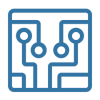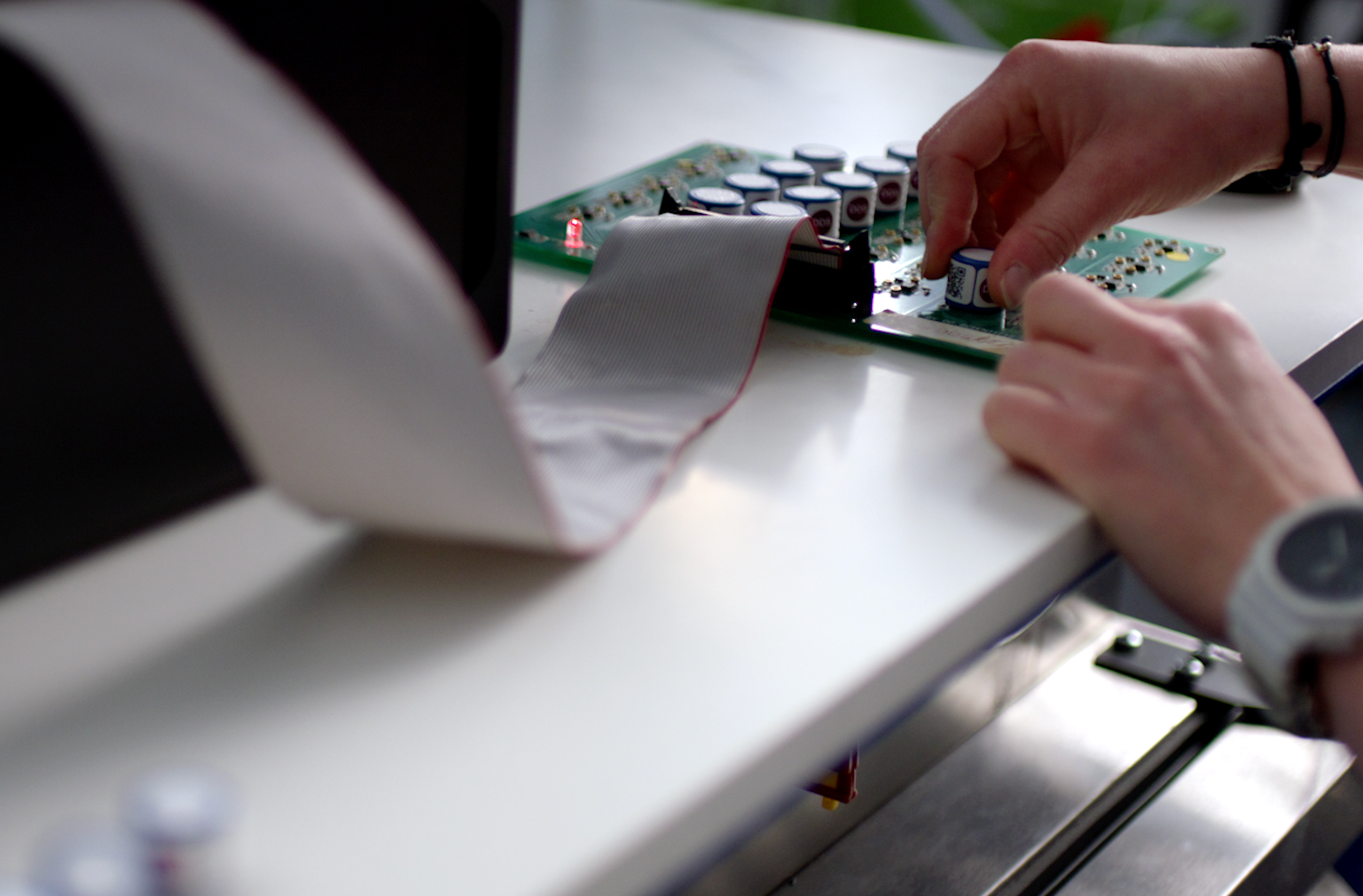
Circuit Diagrams
The type of circuit required for use with DD-Scientific electrochemical gas sensors will depend upon the type of sensor and the number of pins it has.
Below you will find recommended circuits for our most commonly used sensors. Whilst we dont currently provide PCBs for use with our sensors, we do employ in-house electronics engineers who frequently interface directly with our customers and are happy to assist with customer applications.
If you cant find the circuit you were looking for or are facing issues with circuit design, please dont hesitate to get in touch.
🔍 Select the relevant circuit below [see product description for number of pins and bias].
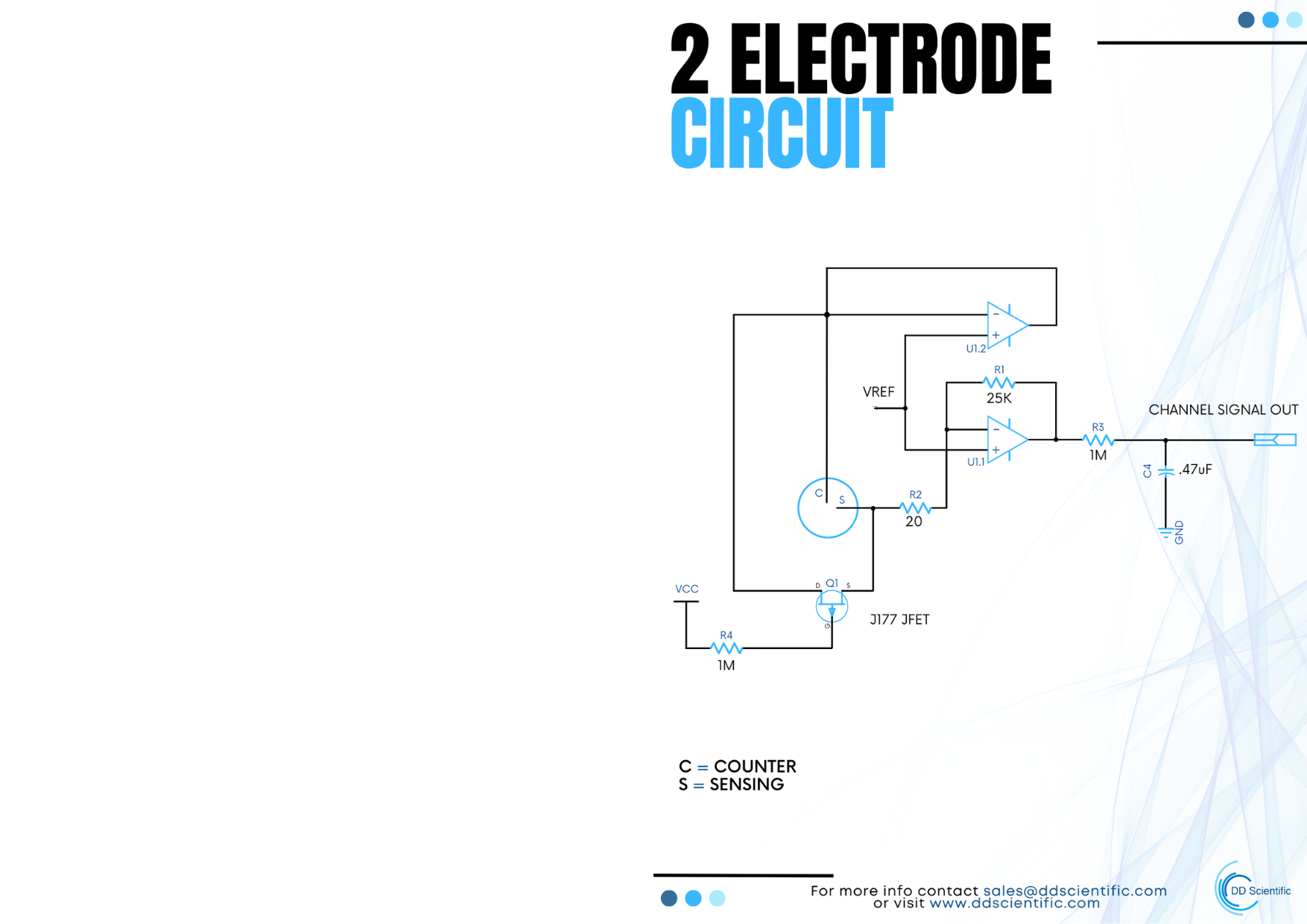
2-Electrode Circuit
Commonly used with CO sensors, the 2-electrode circuit is the simplest of PCB designs used with DD-Scientific sensors.
Note: not for use with 2-pin O2 sensors or Bias sensors - for these refer specific circuits below.
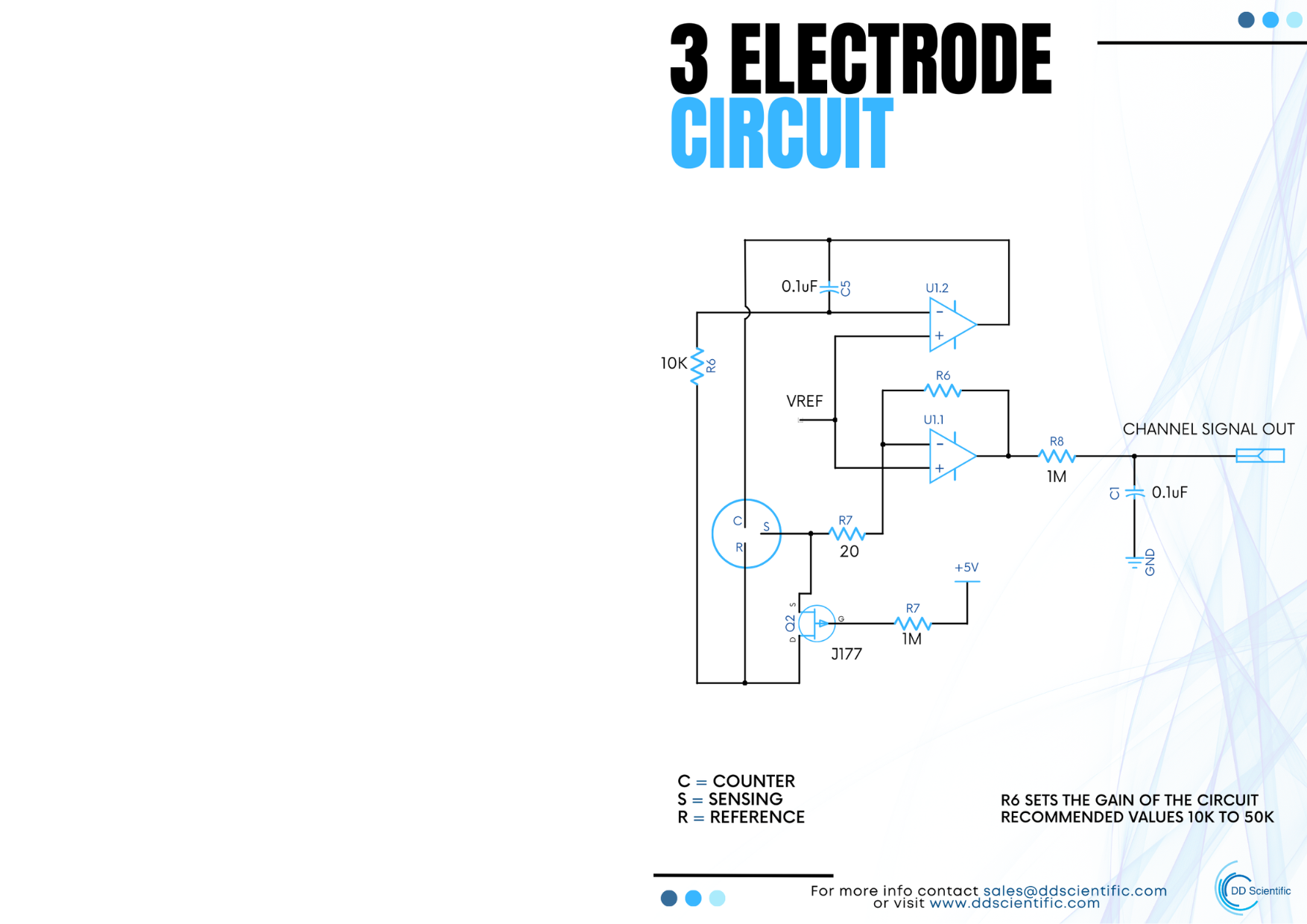
3-Electrode Circuit
Used across a number PCB designs for use with DD-Scientific toxic sensor, the 3-electrode circuit includes provision for a reference electrode.
Note: not for use with 3-pin lead-free O2 sensors or Bias sensors - for these refer specific circuits below.
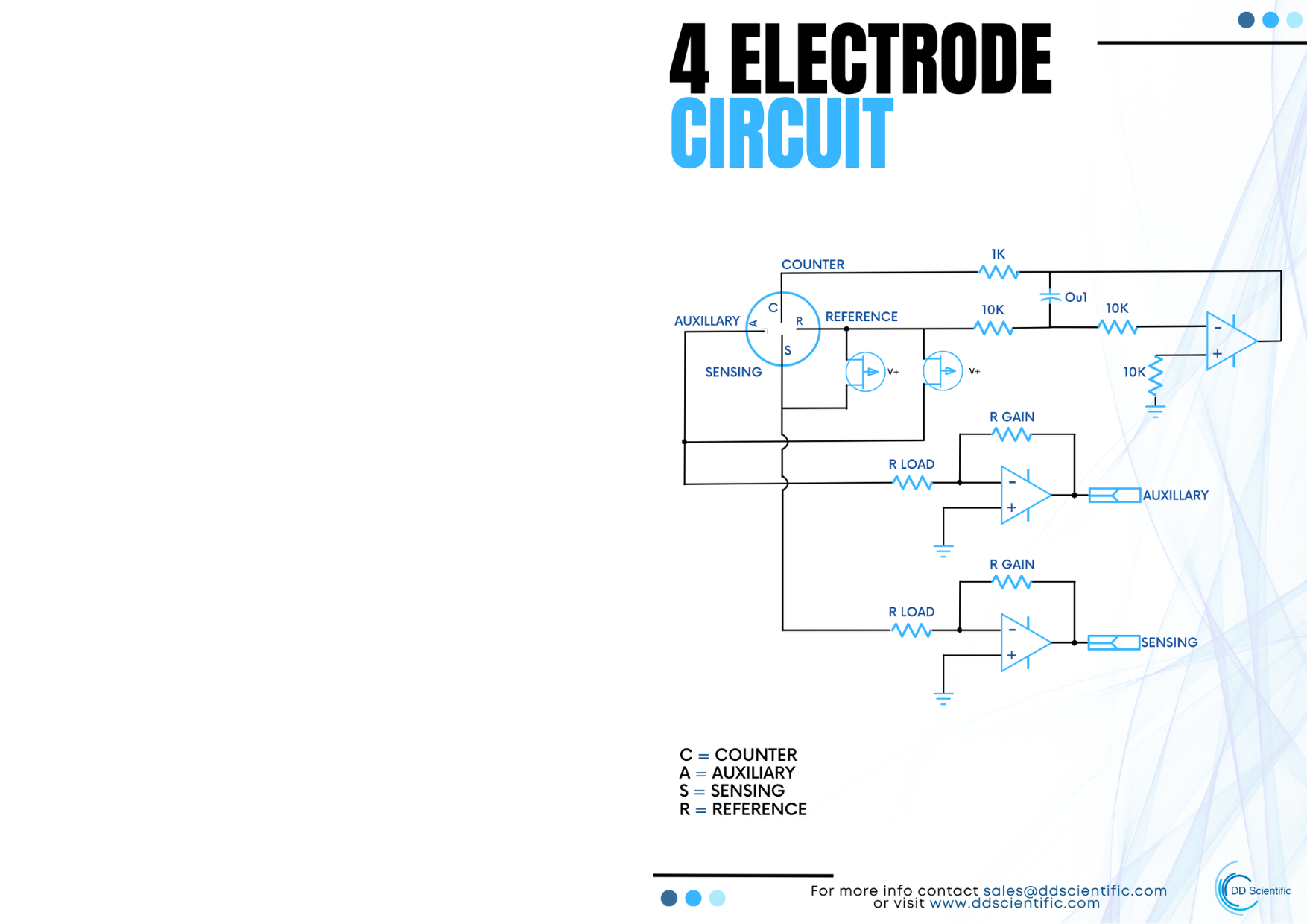
4-Electrode Circuit
Frequently used in the emissions sector, the 4-electrode circuit includes a counter, working, reference and auxiliary electrode.
This configuration incorporates the auxiliary electrode required in some dual-chanel and H2 compensated sensors.
Note: not for use with 4-pin Dual-toxic sensors or Bias sensors - for these refer specific circuit below.
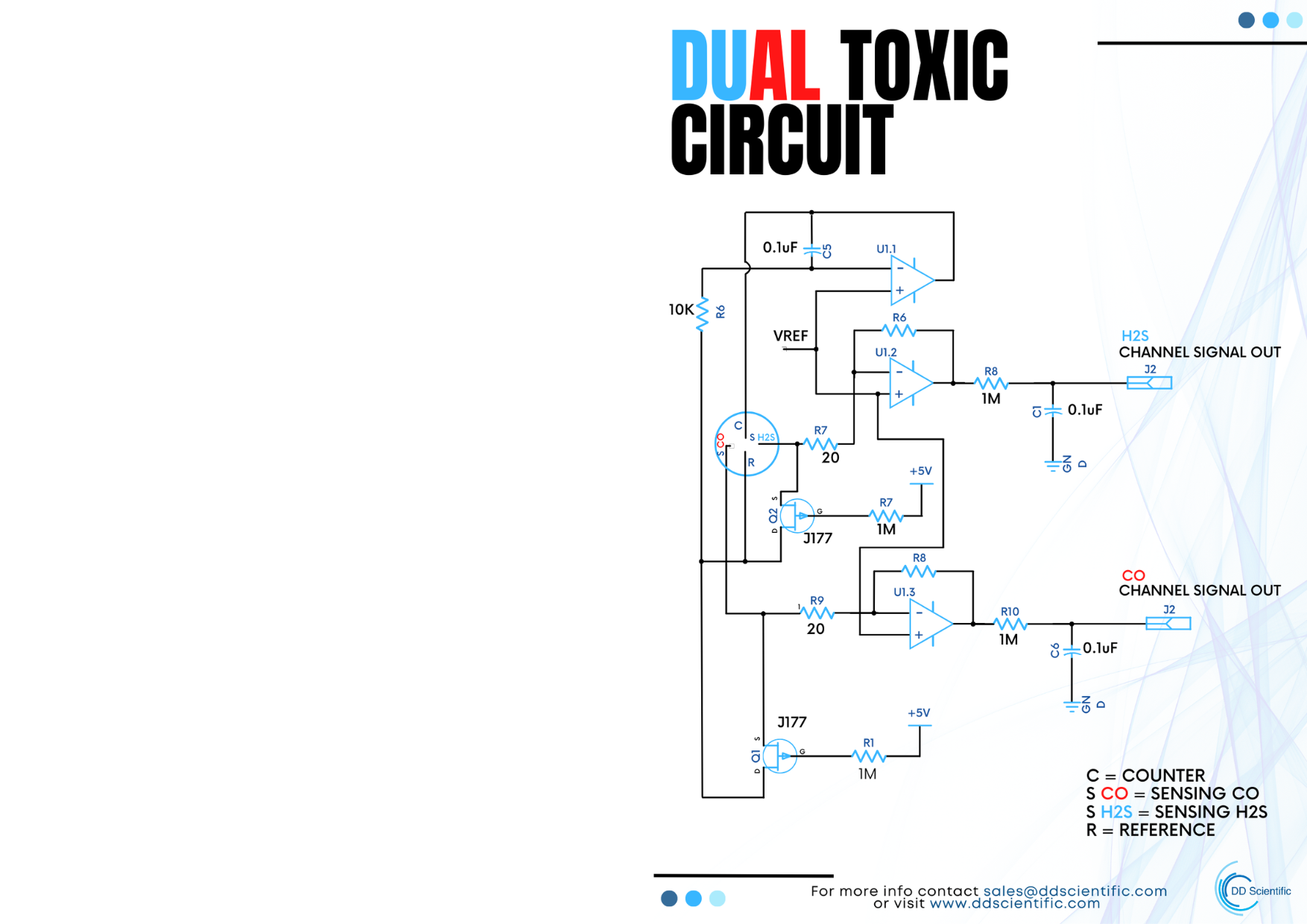
Dual-Toxic Circuit
The Dual-Toxic circuit is used with our DT sensors which detect 2 gases independently within the same sensor.
It integrates dual sensing elements, ensuring high sensitivity and specificity for each target gas.
Note: for use with Dual Toxic sensors only - for other 4-pin sensors use specific circuits.
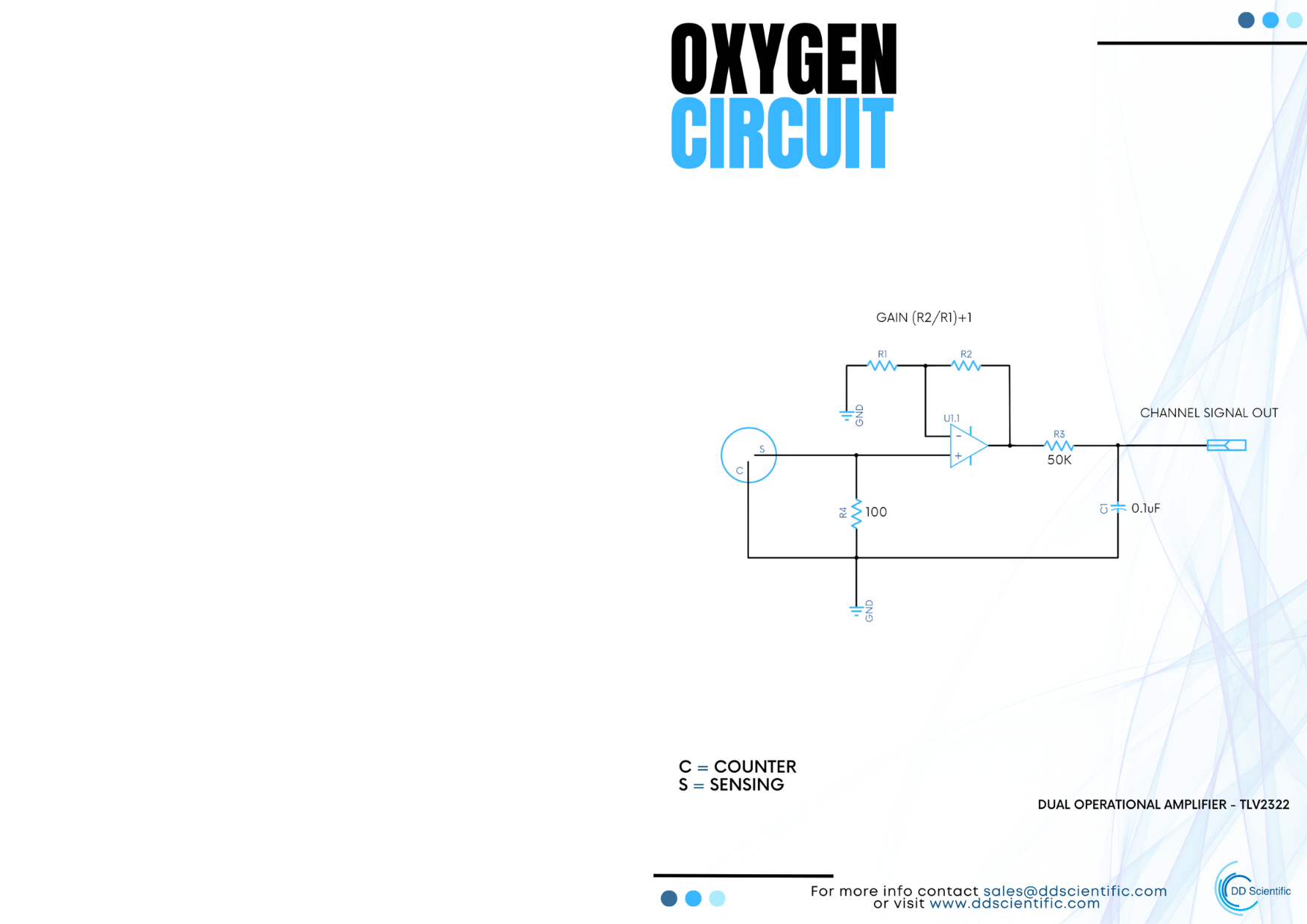
Lead-Oxygen Circuit
For use with Lead-Oxygen sensors, this simple circuit incorporates counter and sensor electrode and will provide accurate and rapid detection.
Note: for use with Lead-O2 sensors only - for other 2-pin sensors use specific circuits.
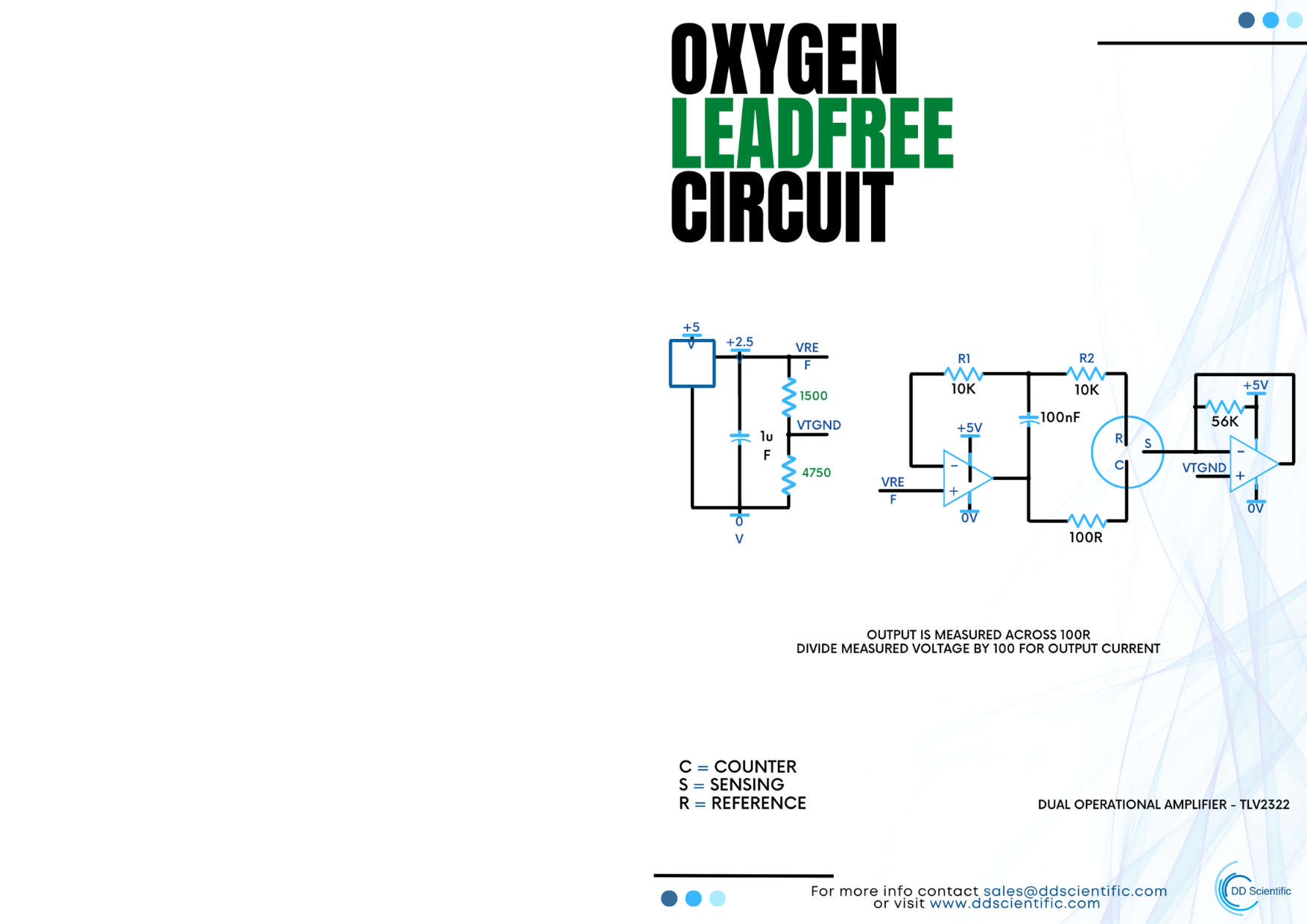
Lead-Free Oxygen Circuit
Lead-Free sensors require different circuitry to Lead-Oxygen sensors as they require a bias to be maintained.
In portable instrument applications many manufacturers successfully incorporate a coin-cell into their circuit.
Note: for use with Lead-free O2 sensors only - for other 3-pin sensors use specific circuits.
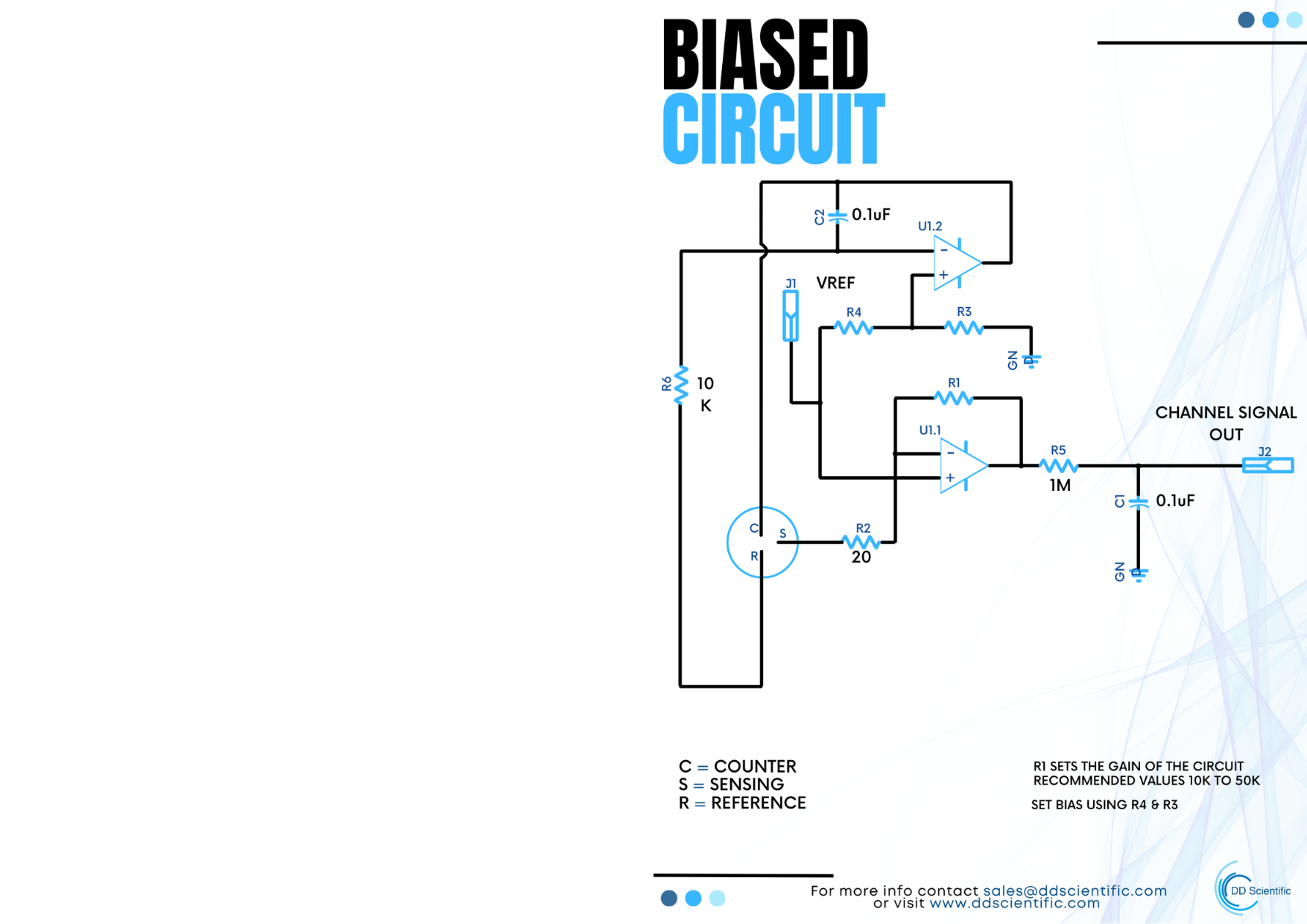
Bias Circuit
Bias sensors require different circuitry to other sensors in that they require a bias to be maintained.
In portable instrument applications many manufacturers successfully incorporate a coin-cell into their circuit.
Note: for use with Bias toxic sensors only - for other 4-pin sensors use specific circuits.
Incorrect socket selection can lead to issues with sensor performance and longevity. Selecting the correct socket ensures optimal sensor performance and long-term stability across a range of gas detection applications.
Below is a list of PCB sockets which are known to be compatible with DD-Scientific electrochemical gas sensors. These sockets are designed to provide secure, reliable electrical connections while simplifying sensor installation, maintenance, and replacement.

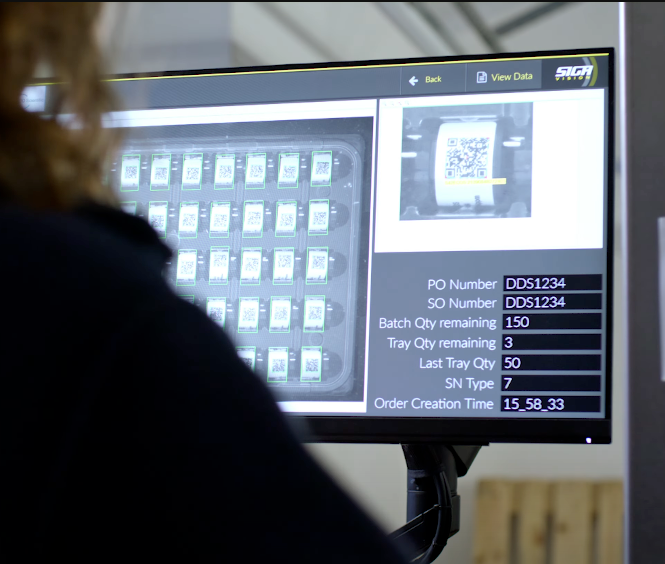
Need our help?
If you need assistance selecting, sourcing or integrating one of our sensors we are here to help.



